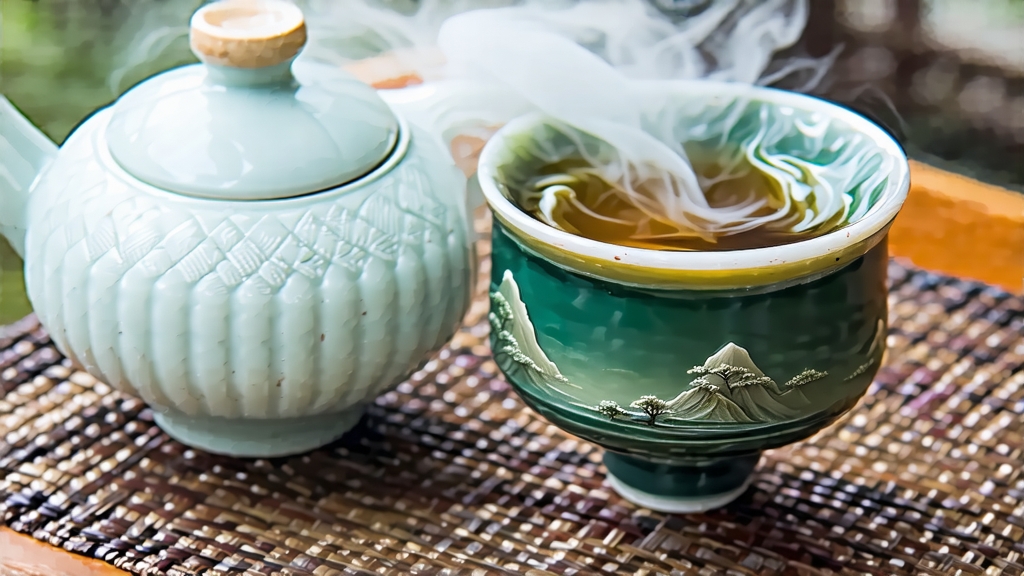
Alishan High-Mountain Oolong, known in Taiwan as “Alishan Qing Cha,” is the island’s most celebrated gift to the global tea canon. Grown between 1,000 and 1,400 meters in the mist-veined Alishan Range, this tea absorbs 2,600 mm of annual rainfall, diurnal temperature swings of 10 °C, and ultraviolet-rich cloud-filtered light. The result is a leaf that carries the mountain’s voice—floral, creamy, and endlessly layered.
Historical Roots
Oolong technology migrated from Fujian’s Wuyi Mountains to Taiwan during the mid-19th-century Qing exodus. settlers of the Zhangzhou and Quanzhou dialect groups brought the tradition of “qing xiang” (light fragrance) processing. Alishan itself remained a camphor-forested wilderness until the Japanese colonial government (1895-1945) opened logging railways; tea gardens followed the rails upward after 1975, when Taiwan’s export economy pivoted from quantity to quality. By 1990, Alishan terroir had become shorthand for the island’s highest grade of high-mountain oolong, commanding prices that rival top Burgundy crus.
Cultivars and Micro-Regions
The overwhelming majority of Alishan oolong is crafted from the Jin Xuan (TTES #12) and Qing Xin (TTES #13) cultivars. Jin Xuan, developed in 1981, adds natural milk lactones to the cup, while the older Qing Xin offers piercing orchid high notes. Within Alishan, micro-valleys such as Shizhuo, Zhonghe, and Teifuya claim their own nanoclimate signatures: Shizhuo’s basaltic red soil yields a cinnamon-spice finish; Zhonghe’s perpetual fog intensifies amino acids, giving a velvety mouthfeel; Teifuya’s cooler nights lock in green apple acidity. Farmers often hedge altitude risk by planting hedgerows of Taiwania cypress, whose root exudates are believed to repel tea green leafhoppers and add resinous complexity to the leaf.
Plucking Standard
Only the “xiao kai mian” (small open face) pluck is accepted—top two leaves and the bud, snapped when the leaf backs shimmer silvery green but before the serrations blunt. Picking begins at dawn when leaf turgor is highest; baskets are shaded with wet muslin to prevent enzymatic browning during the 30-minute trek down the slope. A master picker can finish 6 kg of fresh leaf by 9 a.m., enough for 1 kg of finished tea after the long road of processing.
Withering: The First Dialogue Between Leaf and Air
Spread on 4-meter bamboo trays, the leaves undergo outdoor sun-withering for 20–40 minutes depending on solar flux. UV-B radiation triggers the shikimate pathway, converting catechins into aromatic geraniol and linalool. The leaf is then moved indoors for “cool walking,” a unique Taiwanese technique where trays are stacked on slatted shelves and oscillating fans drop the temperature to 18 °C. This shock halts oxidation at the leaf edge while keeping the vein green, creating the hallmark “green belly with red rim” that connoisseurs prize.
Oxidation: Riding the 30 Percent Wave
Alishan oolong is classified at 25–35 % oxidation, lighter than the 50 % benchmark of traditional Wuyi rock tea. Oxidation is choreographed in tumbling bamboo drums rotating at 6 rpm for 3-minute bursts, followed by 10-minute rest. The goal is to bruise the cuticle without rupturing cell walls, allowing polyphenol oxidase to kiss the edges while preserving chlorophyll at the center. Master sniffers hover over the drum, inhaling every 30 minutes; when the aroma shifts from cut grass to ripe peach, they call “ting” (stop).
Fixation: Killing Green with Fragrant Fire
A 260 °C electric wok halts oxidation in 90 seconds. Unlike the charcoal “bei huo” of Wuyi, Alishan processors prefer infrared burners that deliver uniform heat without smoke. The leaf must exit the wok at 65 % moisture, flexible enough for the coming sculpting yet chemically stable. A metallic clack-clack rhythm fills the room as workers toss leaves skyward, cooling them in mid-air.
Rolling & Balling: The Birth of the Jade Pearl
Taiwan’s trademark spherical shape emerges through a 37